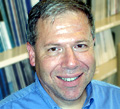
Thomas Lang
Thomas F. Lang, PhD, professor of radiology at UCSF’s Center for Molecular and Functional Imaging, has been named team leader for the Musculoskeletal Alterations Team of the National Space Biomedical Research Institute (NSBRI).
“Dr. Lang is a respected scientist who is devoted to conducting flight-relevant research to help the US reach its space exploration goals,” said Jeffrey P. Sutton, MD, PhD, NSBRI director. “With his leadership, the team will develop countermeasures to bone loss and muscle weakening in space and will benefit patients on Earth.”
As team leader, Lang will manage scientists at seven institutions working on nine NSBRI projects. In addition to understanding and limiting bone loss and muscle weakening during spaceflight, the team’s research findings will impact treatment of similar conditions, such as osteoporosis, on Earth.
Lang has a group of researchers working on characterizing bone geometry and biomechanical properties, using computed tomography. His current research, which is funded by National Institutes of Health, NASA and pharmaceutical companies, includes studies of ethnic and genetic aspects of bone density, geometry and biomechanical characteristics, as well as studies of the effects of spaceflight and pharmacologic interventions on these properties. He has recently focused on developing molecular imaging techniques combining nuclear medicine and computed tomography to study bone remodeling.
Lang received a bachelor’s degree in chemistry from the University of Chicago and his doctoral degree in chemistry from UC Berkeley. He began his career at UCSF in 1990 as a postgraduate researcher.
The NSBRI, funded by NASA, is a consortium of institutions studying the health risks related to long-duration spaceflight. The institute’s science, technology and education projects take place at more than 70 institutions across the United States.
Other NSBRI teams address space health concerns such as cardiovascular changes, radiation exposure, neurobehavioral and psychosocial factors, remote medical care and research capabilities, and habitability and performance issues such as sleep cycles and lunar dust exposure.

